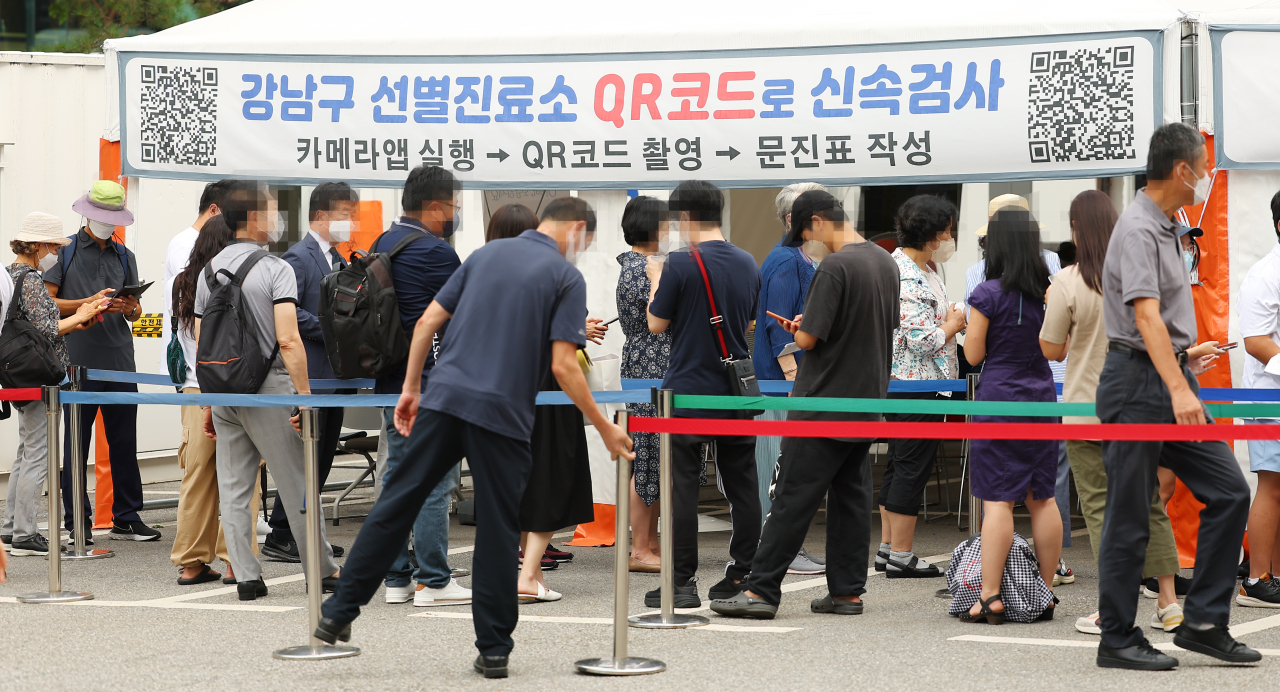Omicron strains are driving a new COVID-19 wave in South Korea. The daily infections reached a 2-month high, while the weekly average number of COVID-19 infections almost doubled last week.
According to the Korea Disease Control and Prevention Agency, the country added 37,360 new COVID-19 infections during the 24 hours of Monday.
The daily count is the highest since May 11, when the country reported 43,908 cases. Tuesday’s figure was an almost twofold increase compared to 19,371 cases a week earlier.
The number of severe cases climbed to 74 on Monday, up from the previous day’s 71. The KDCA also reported seven deaths from COVID-19 the same day.
The daily number of COVID-19 infections have been increasing sharply over the last week, government data showed.
The weekly average number of COVID-19 cases during the first week of July reached 111,910, up 87 percent from a week ago. The daily average number of COVID-19 cases also came to 15,987 during the same week.
The reproduction rate reached 1.4 last week, up from 1.05 in the fifth week of June. An RT reading over 1 implies the virus will continue its reproduction, while a reading below 1 means the virus will recede.
As the number of daily cases continue to rise, the number of critically ill patients and deaths from COVID-19 are showing signs for further increases, along with the hospital bed occupancy.
The average weekly number of critically ill patients fell to 48 last week, from 50 a week earlier, but the decrease appeared to be mainly due to the increased number of deaths from COVID-19 last week. Last week, a total of 62 people died of the virus, up from 46 deaths a week prior.
The hospital bed occupancy rate increased to 7.8 percent last week, from 5.2 percent a week ago.
As COVID-19 figures rebound, the government returned to the “medium” COVID-19 risk level on Tuesday. It was the first time for the government to elevate the risk level since the third week of May, when it reduced the level to “low.”
The government said the recent increases in COVID-19 figures are mainly due to waning immunity and BA. 5, a new highly infectious omicron subvariant.
The proportion of BA. 5 infections among South Korea’s local infections came to 23.7 percent in the first week of July, slightly down from 24.1 percent in the fifth week of June.
Its proportion among international arrivals, however, reached 70 percent in the first week of July, up from 49.2 percent in the previous week.
During a COVID-19 response meeting Tuesday, “Im Sook-young, an official from the KDCA, said the government would unveil a new set of antivirus measures on Wednesday to contain the spread.
The new measures are expected to include a new COVID-19 booster program, which will be available for the people who are aged 50 and above -- extended from earlier booster programs that were only provided to the people who are in their 60s.
The government’s new measures may also consist of measures to strengthen the country’s overall capacity of the country’s health care system, such as securing additional hospital beds and COVID-19 testing stations.
But, experts and media outlets here anticipate that it is unlikely that the government will reinstate social distancing curbs or the outdoor mask mandate this time.
By Shim Woo-hyun (
ws@heraldcorp.com)








